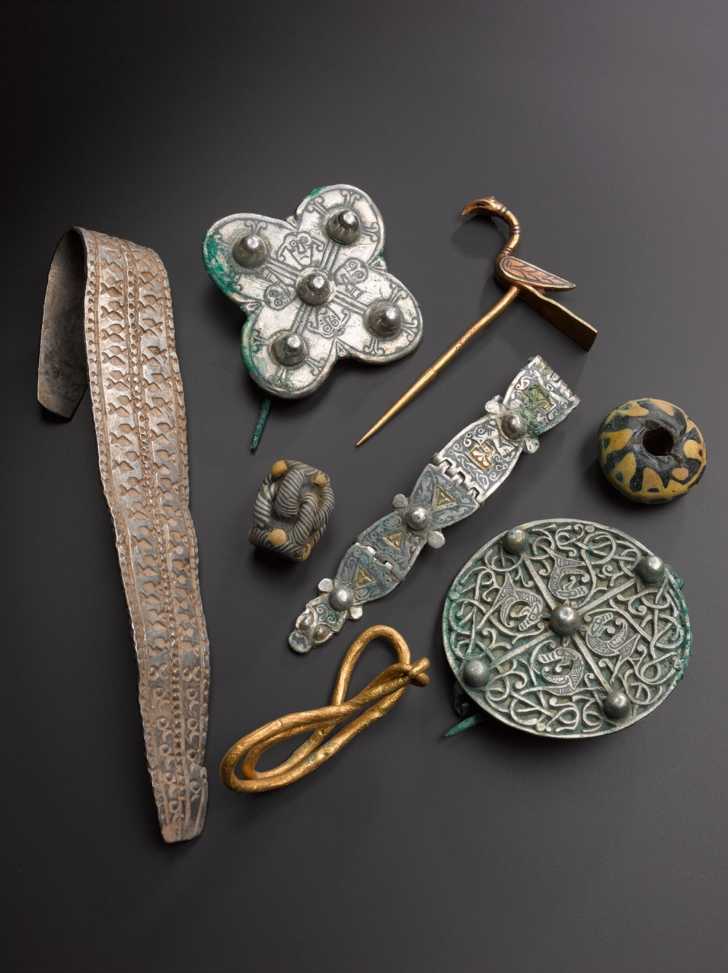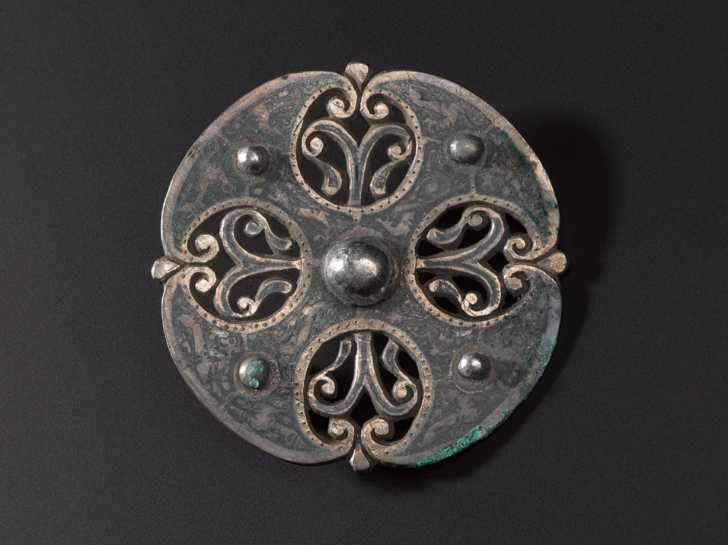Valuable Anglo-Saxon Hoard Was Buried in the Ground for 1,000 Years
The finds are in excellent condition considering their history.
We’ve all had jewelry or metal pieces that were hard to clean. Now imagine that the jewelry you need to shine up has been sitting in the mud for 1,000 years. This is what happened in the case of the Galloway Hoard, a massive find that includes jewelry, beads, metal arm cuffs, silver bullion, and other artifacts from around 900 AD. The Galloway Hoard was acquired by National Museums Scotland in 2017 and ever since then the staff have been working to restore the pieces to their former glory.

The Galloway Hoard was discovered by retired businessman and detectorist, Derek McLennan, in 2014, who initially thought he had found a silver spoon. The stash includes elaborate Anglo-Saxon metal items as well as fragile examples of wool and the oldest known example of silk ever found in Scotland. Little is known about who may have owned the hoard or how it came to lie where it was found, but the public fascination with the collection has been strong.
National Museums Scotland earlier this year shared process photos of one of hoard items being cleaned. A millennia of dirt and grime were lodged into the cross amulet necklace. The metal cross hangs from a piece of animal intestine wrapped in metal coils, while the cross itself contains elaborate metal inlays. The person who this item was made for would have had high status to be able to afford this brilliant craftsmanship.

The cross depicts St. John as an eagle, Saint Matthew as a human, Saint Mark as a lion, and Saint Luke as a calf. Museum staff had to figure out how to clean the dirt out of the crevices of the piece without damaging the delicate inlay work. They finally settled on porcupine quills as they are stiff but don’t damage metal. The before and after on the cross is truly dramatic and shows just how long it can take to clean up these antique finds.

According to Dr. Leslie Webster, former staff of the British Museum, the cross, “…was made in Northumbria in the later ninth century for a high-ranking cleric, as the distinctive form of the cross suggests. Anglo-Saxon crosses of this kind are exceptionally rare, and only one other – much less elaborate – is known from the ninth century. The discovery of this pendant cross, in such a remarkable context, is of major importance for the study of early medieval goldsmith’s work, and for our understanding of Viking and Anglo-Saxon interactions in this turbulent period.”
The cross was buried along with a parcel of silver bullion, one of 4 parcels overall that comprise the hoard. The hoard also included a number of brooches from the same time period as the inlay cross, each with a high level of detail work.

The Galloway Hoard is planned to be on display at the National Museum of Scotland from February 2021, with tours planned of the exhibit in 2022. After that the hoard is planned to be on long-term display at the National Museum of Scotland in Edinburgh.
SKM: below-content placeholderWhizzco for DOT

